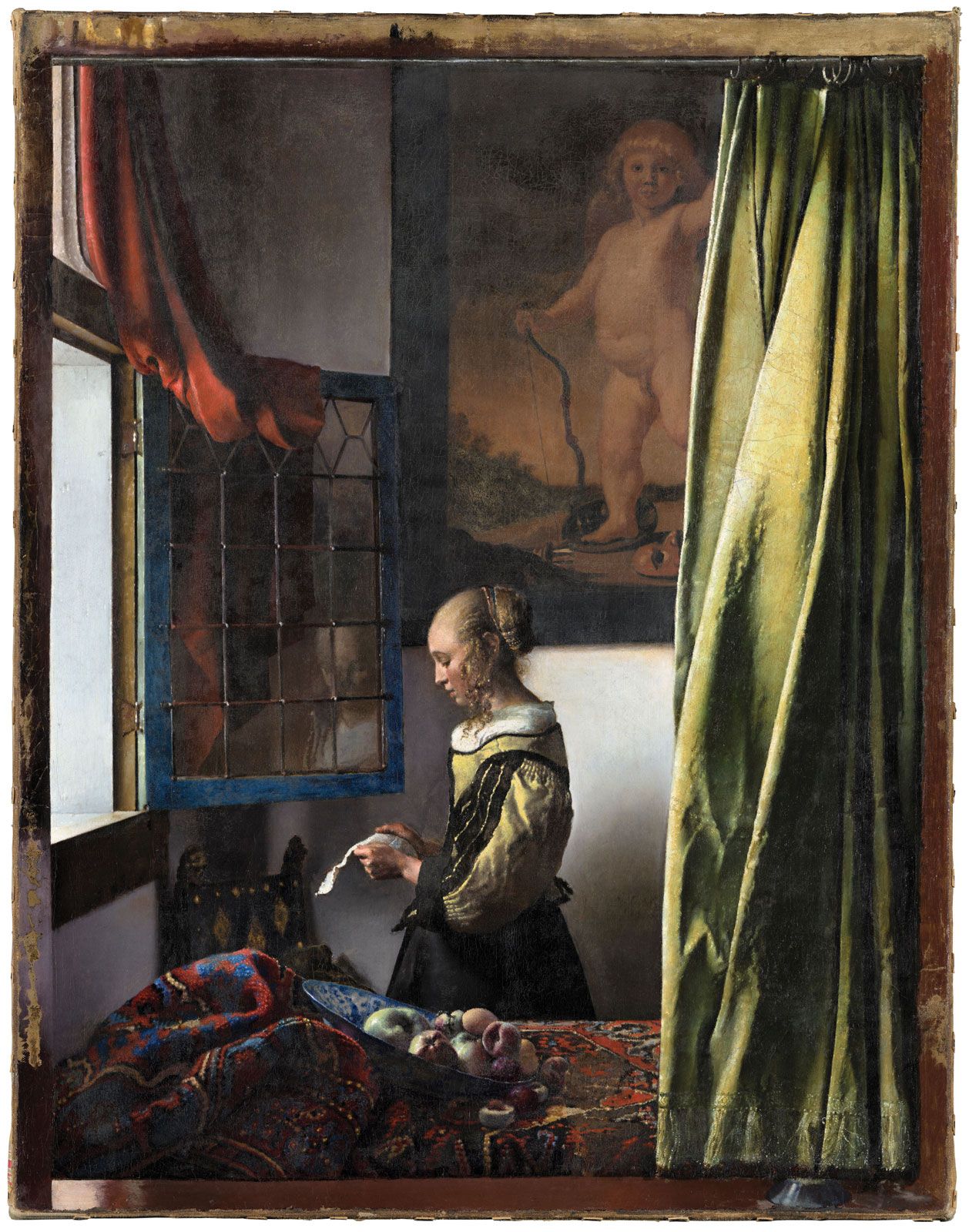
At long last, love has returned to the Girl Reading a Letter at an Open Window.
Today, the Gemäldegalerie Alte Meister in Dresden, Germany, unveiled the first full image of Johannes Vermeer’s famed 17th-century painting since researchers completed a years-long process to restore a picture of Cupid in the background of the composition.
Bow and arrow in hand, the Roman god of love appears above the titular girl in a painting hanging on the wall of her room, creating a picture-in-picture effect.
Stephan Koja, director of the museum, explained in a statement that the restoration has big implications for the themes of the Golden Age painting: What was once thought to be a mysterious if somewhat dour scene is now brimming with hope.
“With the recovery of Cupid in the background, the actual intention of the Delft painter can [now] be recognized,” Koja said. “Beyond the ostensibly amorous context, it is about a fundamental statement about the nature of true love. So before that we only looked at a rudiment. Now we understand it as a key image in his oeuvre.”
A similar image of Cupid appears in Vermeer’s 1670–72 painting Lady Standing at a Virginal. Scholars have speculated that both pictures are based on a real-life painting owned by the artist. A 1676 inventory of his widow’s possessions mentions “a Cupid.”
Girl Reading a Letter will headline the Gemäldegalerie’s upcoming exhibition “Johannes Vermeer: On Reflection,” set to go on view September 10. The show marks the first time in centuries that the painting will be presented in its original state.
Vermeer’s Girl Reading a Letter at an Open Window undergoing restoration. © Staatliche Kunstsammlungen Dresden.
Vermeer’s painting—thought to have been completed between 1657–59, and one of roughly 40 canvases by the Dutch master that are extant today—has been in the Gemäldegalerie’s collection for more than 275 years. For all of that time, the backdrop of the subject was a bare wall. It wasn’t until 1979, when the museum x-rayed the painting, that experts realized the section had been overpainted to obscure the Cupid figure.
At that time, the correction was believed to have been made by Vermeer himself. But in 2017, after conservators studied the painting through a number of newfangled techniques—infrared reflectography imaging, microscopic analyses, and x-ray fluorescence examination among them—they realized that the overpainting had actually been completed at least several decades after the artist’s death.
At the time, Gemäldegalerie senior conservator Uta Neidhardt called the discovery “the most sensational experience of my career.”
“It makes it a different painting,” she said.
“Johannes Vermeer: On Reflection” will be on view September 10, 2021, through January 2, 2022, at the Gemäldegalerie Alte Meister in Dresden, Germany.